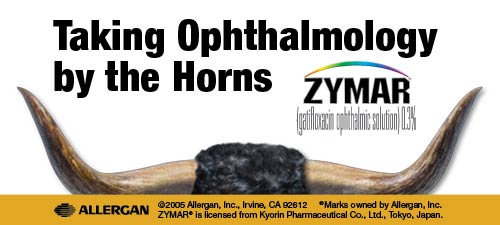Treatment of
Amblyopia in Children Aged 7 to 17 Years
The Pediatric Eye Disease Investigator Group at the
Jaeb Center for Health Research, Tampa, FL, conducted a randomized trial
aimed at evaluating the effectiveness of treatment of amblyopia in children
aged seven to 17 years.
At 49 clinical sites, 507 patients with amblyopic eye visual acuity
ranging from 20/40 to 20/400 were provided with optimal optical correction
and then randomized to a treatment group (two to six hours per day of
prescribed patching combined with near visual activities for all patients,
plus atropine sulfate for children aged 7 to 12 years) or an optical
correction group (optical correction alone). Patients whose amblyopic
eye acuity improved 10 or more letters (two lines or greater) by 24
weeks were considered responders.
In 7- to 12-year-olds (404 patients), 53 percent of the treatment group
were responders, compared with 25 percent of the optical correction
group. In the group of 13- to 17-year-olds (103 patients), the overall
responder rates were 25 percent and 23 percent, respectively, but they
were 47 percent and 20 percent, respectively, among patients not previously
treated with patching and/or atropine for amblyopia. Most patients,
including responders, were left with a residual visual acuity deficit.
Investigators concluded that amblyopia improves with optical correction
alone in about one-fourth of patients aged 7 to 17 years, although most
patients initially treated with optical correction alone will require
additional treatment for amblyopia. For patients 7 to 12 years, prescribing
two to six hours per day of patching with near visual activities and
atropine can improve visual acuity, even if the amblyopia has been previously
treated. For patients 13 to 17 years, prescribing patching two to six
hours per day with near visual activities may improve visual acuity
when amblyopia has not been previously treated; however, investigators
believe that it is of little benefit if amblyopia was previously treated
with patching. The authors state that they do not yet know whether visual
acuity improvement will be sustained once treatment is discontinued;
therefore, conclusions regarding the long-term benefit of treatment
and the development of treatment recommendations for amblyopia in children
7 years and older await the results of a follow-up study that they are
conducting on patients who responded to treatment.
|







 TWO-YEAR
CLINICAL TRIAL DATA RELEASED FOR B&L’S RETISERT FOR POSTERIOR
UVEITIS.
TWO-YEAR
CLINICAL TRIAL DATA RELEASED FOR B&L’S RETISERT FOR POSTERIOR
UVEITIS.













